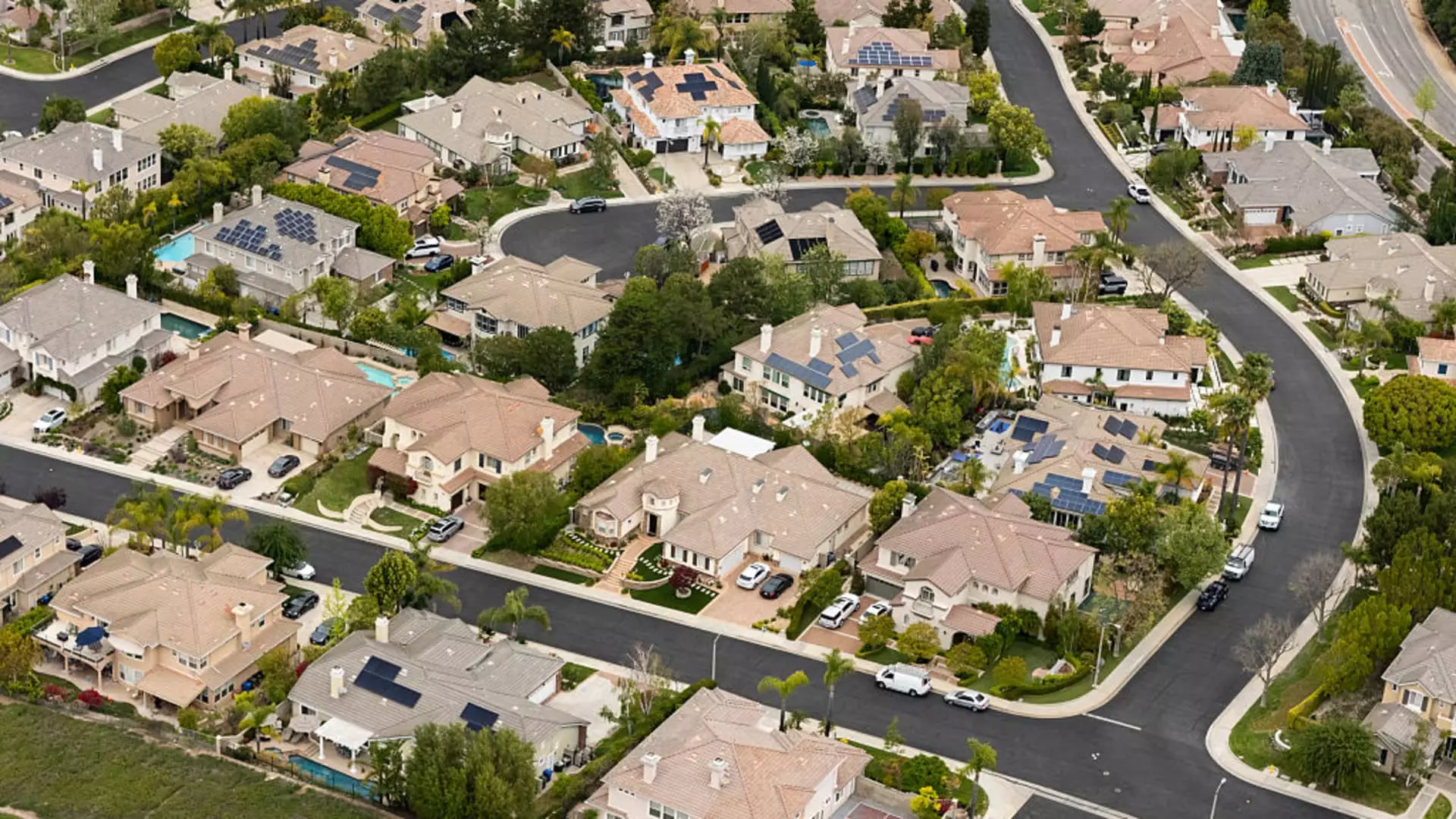Since the beginning of the pandemic, the housing market has been a tumultuous rollercoaster ride for prospective homeowners. With mortgage rates hitting record lows, the allure of homeownership sent many into a frenzied search for properties, driving prices soaring to unprecedented levels. As illustrated by the S&P CoreLogic Case-Shiller Index, national home prices have surged a staggering 39% compared to March 2019. The irony lies in the simultaneous struggle for many Americans to find affordable homes amidst this ever-elusive market. A critical examination of this situation reveals alarming truths about how the bifurcation between the wealthy and average Americans continues to widen, exacerbating socioeconomic disparities in our society.
The Dichotomy of Wealth in Housing Access
It is now painfully clear that while high-income individuals bask in a sea of options, those who earn moderate or low wages often drown under the weight of inaccessibility. Following data from a report by the National Association of Realtors and Realtor.com, it becomes evident that the housing supply’s affordability remains a dire concern. Homebuyers with earnings between $75,000 and $100,000 saw a slight increase in affordable listings, up to 21.2% from a previous 20.8%. This minor tick is hardly an affirmative shift; it belies a deeper crisis. Just five years ago, this same demographic could afford nearly half of all active listings, highlighting the extent of lost opportunities.
Conversely, lower-income households face an increasingly bleak landscape. A buyer earning $50,000 now accesses a mere 8.7% of available listings, down from 27.8% in 2019. This kind of disparity breeds hopelessness and frustration. It offers a disheartening glimpse into the harsh reality that economic mobility is slipping through the fingers of those who ought to be able to invest in their future.
The Market Imbalance: An Ongoing Struggle
The concept of a balanced housing market seems to be more of a mirage than a reachable reality. According to the report, an additional 416,000 listings priced at or below $255,000 would be necessary just to restore equilibrium—a daunting figure that seems improbable given the current landscape. In a market where the wealthy can afford upwards of 80% of listings, the resilience of working families is put to the test daily.
The disparity of inventory based on geography also raises eyebrows, suggesting that a one-size-fits-all approach fails to accommodate the diverse real estate environment across America. While cities like St. Louis and Akron display a balance with adequate supply, markets in places like Seattle and Washington, D.C., leave families stranded, trying to afford homes that require six-figure salaries.
Yet, Hope Remains: Pockets of Improvement
Amidst this dismal picture, there are glimmers of hope. Cities such as Raleigh, NC, and Grand Rapids, MI, show improvements in affordable listings, signaling a potential shift towards a more equitable real estate landscape. In places where the market once ran hot, like Austin and San Francisco, increased inventory is surpassing pre-pandemic levels. These developments illustrate that thoughtful interventions, including responsible construction practices and proactive local policies, can serve as catalysts in addressing our housing crisis.
However, it remains essential to acknowledge that efforts in many regions are hindered by decades of underbuilding, restrictive zoning laws, and soaring construction costs that threaten to strangle the housing supply further.
The repercussions of our current inadequate housing market reach far beyond property ownership. They touch countless lives, affecting family stability, community cohesion, and individual well-being. As we witness an unprecedented polarization between economic classes, it falls upon policymakers, community leaders, and citizens to champion more adaptable housing solutions that promote affordability for all. The challenge is demanding and complex, but it is a cry for justice that cannot be ignored. The dream of homeownership should not be a privilege reserved for the wealthy; it must become a reality accessible to everyone eager to invest in their future. The time for change is now, and it is imperative we all act to convene on affordable housing as a collective priority.

Leave a Reply